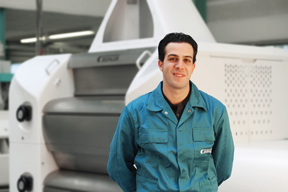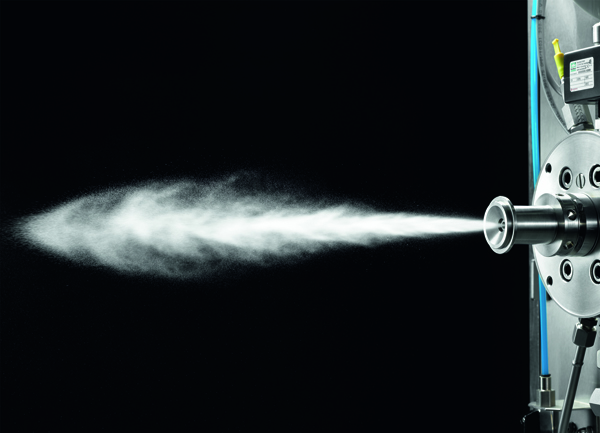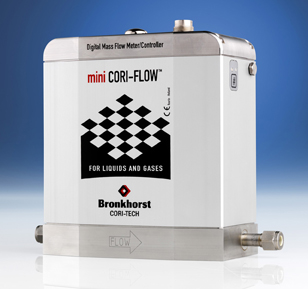Back in 1996 FlavorActiV’s core business was beer. Nearly two decades later and sensory services are now sought after across numerous markets, from dairy to CSDs, with the spirits industry being the latest to take notice.
A new method has been published in the Analytica-EBC, on the determination of ethanol concentrations in NAB and LAB, no-alcohol and low-alcohol beers. The method is based on the detection of ethanol by flame ionisation following headspace injection in gas liquid chromatography (GLC).
Alpha acids in hops are responsible for beers’ bitterness via their thermal isomerization into isoalpha acids during the kettle boil. The alpha acids that don’t isomerize are absorbed onto the trub and yeast during fermentation with little if any getting into the final beer. Interestingly, alpha acids are soluble in beer and when added post-fermentation can dramatically improve the foam stability and lacing of beers at very low concentrations. This study shows that alpha acids can enhance the foam stability and lacing of beers, similar to tetrahydro-isoalpha acids and better than isoalpha acids or propylene glycol alginate (PGA). Foam stability measurements were made using the NIBEM-T foam tester via EBC test method 9.42.
Dry hopping influences the physico-chemical properties as well as the sensory attributes of beer. The hop aroma and flavor are very different from those present in beers which have been hopped exclusively on the hot side of production (wort boiling and whirlpool). Various factors such as hop variety, the type of hop product, timing of the additions, contact time and the beer matrix appear to affect the resulting flavor and aroma of the finished beer to differing degrees.
Everyone is familiar with this: If one announces oneself as a brewer when meeting people, it will usually not take long until the question about the best beer in the world pops up. I always have the same answer: “There is no such thing as THE best beer in the world as every beer drinker perceives a beer in a different way and takes a different view of quality”.
Industrial production of kvass and the demand for the concentrate used to prepare it are skyrocketing in Russia and the Ukraine. Fermented kvass malt is necessary for kvass production and consists of briefly germinated and stewed rye malt. This malt has been subjected to an exceptionally long anaerobic stewing phase. This phase serves to completely liquefy the endosperm in addition to promoting strong lactic acid formation. Despite a low kilning temperature, the malt possesses a unique aroma reminiscent of the crust of “Schwarzbrot” or “black bread”, a type of sourdough bread made from a mix of rye and wheat common in Southern Germany, Austria and Switzerland. The malt also has a pleasant sweet and sour flavor. The processes employed in Russia and the Ukraine to produce kvass malt are described below.
Operating equipment inspection (OEI) is a recurring inspection of installed electrical operating equipment. This inspection of the system is legally mandated in the Operational Safety Ordinance 2009/104/EG Recurring inspections. Bühler GmbH has specially trained service technicians for this task in breweries, since only ATEX-trained personnel may carry out OEI.
SensoTech offers special qualification and validation procedures for its LiquiSonic® concentration analyzers. To ensure a proper system installation, an implementation of the installation qualification (IQ) is recommended. A subsequent operational qualification (OQ) completes the qualification and validation process.
Specialty chemicals company Lanxess has developed Velcorin DT Touch, a new generation of dosing units for the beverage industry. This new range is now being marketed worldwide for the filling of Velcorin as a cold sterilization agent in non-alcoholic beverages and wine. The high-quality dosing units manufactured in Germany and featuring aseptic connections and design meet the strict purity requirements of the beverage industry. They are easy and safe to handle, with control and visualization of the dosing process enabled by a touch panel. Velcorin DT dosing units ensure exact dosing and excellent distribution of Velcorin in the beverage. The state-of-the-art dosing units can be easily integrated into new or existing beverage production lines and only require a small initial outlay.
Bronkhorst Cori-Tech B.V. released a new model in its series of compact Coriolis Mass Flow Meters/Controllers for accurate measurement and control of (very) low flow rates. With the introduction of mini CORI-FLOW™ model M15, the maximum flow range of this product line is extended from 0-30 kg/h to 0-300 kg/h. The instruments are suitable for both liquid and gas flow applications. The unique design of the miniature Coriolis sensor features superior response time and high accuracy, irrespective of changing operating conditions with regard to pressure, temperature, density, conductivity and viscosity. The effective turndown is no less than 1500:1, with easy, on-site possibility for the user to re-range the instrument to his requirements, thus guaranteeing highest process flexibility.
Beer served on tap is still one of the attractions in gastronomy not generally available to consumers at home. So that this attraction does not end in disappointment for both consumer and restaurateur, e.g. due to excessive foaming or flat beer, close scrutiny of the dispensing system and especially the pressure setting for the dispensing gas are paramount. Time and again, it has been demonstrated that members of the restaurant industry and even a few manufacturers are in need of a refresher course on the fundamental practices involved with dispensing draft beer.






